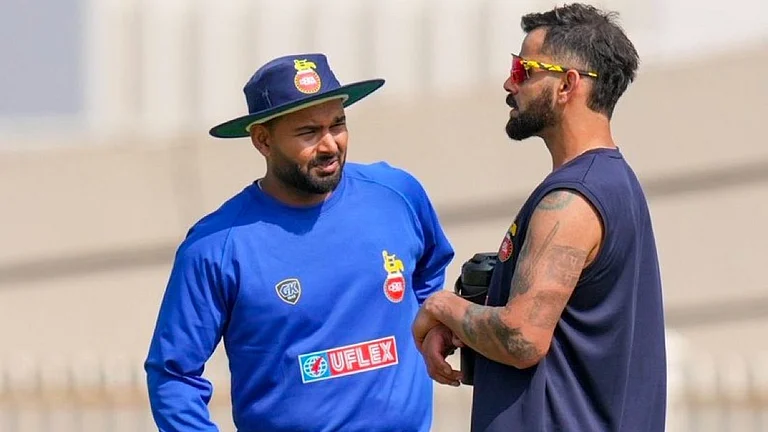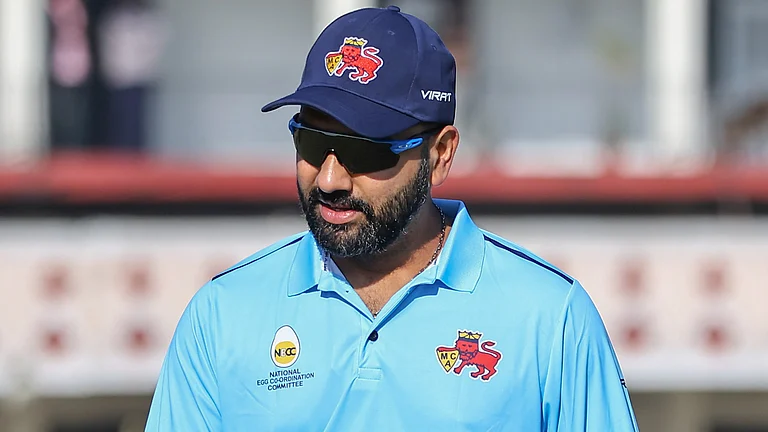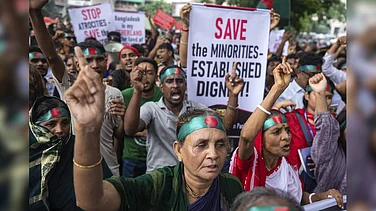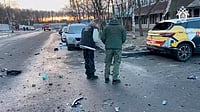Following Russian claims that Ukraine plans to use "dirty bombs", the United Nations (UN) nuclear watchdog has started its investigations.
Experts from the UN's International Atomic Energy Agency (IAEA) inspected two sites in Ukraine on Tuesday that Russia identified by Russia in claims that Ukraine planned to set off radioactive dirty bombs in Russian occupied territories.
IAEA Director General Rafael Grossi said the inspections for evidence of a so-called dirty bomb, requested by Kyiv in the wake of the unsubstantiated Russian allegations, would be completed soon.
In the wake of battlefield setbacks for Russia in its war in Ukraine, top Russian officials, including President Vladimir Putin, made unsubstantiated accusations that Ukraine was manufacturing such an explosive device, which scatters radioactive waste. The Russians, without providing evidence, alleged the Ukrainians planned to make the purported bomb look like Russia's doing.
Russia's UN envoy Vassily Nebenzia alleged in a letter to UN Security Council (UNSC) members last week that Ukraine's nuclear research facility and mining company "received direct orders from Zelenskyy's regime to develop such a dirty bomb".
Western nations have called Moscow's repeated claim "transparently false". Ukraine dismissed it as an attempt to distract attention from Moscow's own alleged plans to detonate a dirty bomb as a way to justify a further escalation of hostilities.
The IAEA has said the investigated sites "are under IAEA safeguards and have been visited regularly by IAEA inspectors", whose mission is detecting undeclared nuclear activities and materials related to the development of dirty bombs.
"The IAEA inspected one of the two locations a month ago and no undeclared nuclear activities or materials were found there," said the agency in a statement on Monday.
The IAEA also has had on-site monitors at the Russian-occupied Zaporizhzhia Nuclear Power Plant. Fighting around near Europe's largest nuclear power station has created worries of a possibly catastrophic leak there.
The Ukrainian president's office said on Tuesday that cities and towns around the plant experienced more heavy shelling between Monday and Tuesday. In Nikopol, a city which faces the plant from across the wide Dnieper River, over a dozen apartment buildings, a kindergarten, and various private businesses were damaged, the office said.
Russian shelling hit 14 towns and villages in the eastern Donetsk region on Monday and into Tuesday, destroying sections of railway track, damaging a power line and taking down mobile communications in some areas. A missile also struck the city of Kramatorsk, which hosts the Ukrainian army's headquarters.
The shelling killed three civilians and wounded three others, the region's governor, Pavlo Kyrylenko, said.
Russian strikes targeting eight regions of southeastern Ukraine killed at least four civilians and wounded four others in 24 hours, the Ukrainian president's office said. Tens of thousands of people faced power blackouts and water shortages following Russian shelling of energy infrastructure in 10 regions on Monday.
Donetsk is one of four regions illegally annexed by Moscow last month, and continues to see fierce clashes as Russian forces press their grinding attack on the cities of Bakhmut and Avdiivka.
Another woman was killed after Russian rockets slammed into apartment buildings and a school in the southern city of Mykolayiv, its mayor reported on Tuesday.
Ukraine was still grappling on Tuesday with the consequences of Mondays' massive barrage of Russian strikes, which disrupted power and water supplies in multiple Ukrainian cities and villages.
Kyiv Mayor Vitali Klitschko said authorities restored electricity and running water in the capital's residential buildings but that rolling power outages would continue in the city because of significant power shortages.
Kyiv region Gov. Oleksiy Kuleba said on Tuesday that 20,000 apartments remained without power.
“Russia has opened an energy front, and is using energy to blackmail the civilian population, provoking hunger and cold in Ukraine,” Kuleba said on Ukrainian TV.
Ukraine's state energy company, Ukrenergo, said in a statement on Tuesday that seven regions would experience rolling blackouts "to reduce the load on the (energy) grid, maintain a stable balance within the system and avoid repeated failures".
In Kharkiv, Ukraine's second-largest city, subway service was suspended again on Tuesday, according to the subway's Telegram page. No reason for the suspension was given.
In the occupied Kherson region, Russian-installed authorities sought to evacuate up to 70,000 more people living within 15 kilometres (9 miles) of the Dnieper River in anticipation of a Ukrainian counteroffensive pushing deeper into the region. The effort was already underway on Tuesday morning, according to the Kremlin-appointed governor of the region Vladimir Saldo.
It comes after an equal number of residents of Kherson city and elsewhere had already been evacuated. Ukraine's General Staff on Tuesday described the new evacuations as “forced displacement,” saying that that those residing along the banks of the Dnieper river “are forcibly evicted from their homes.”
(With AP inputs)


























